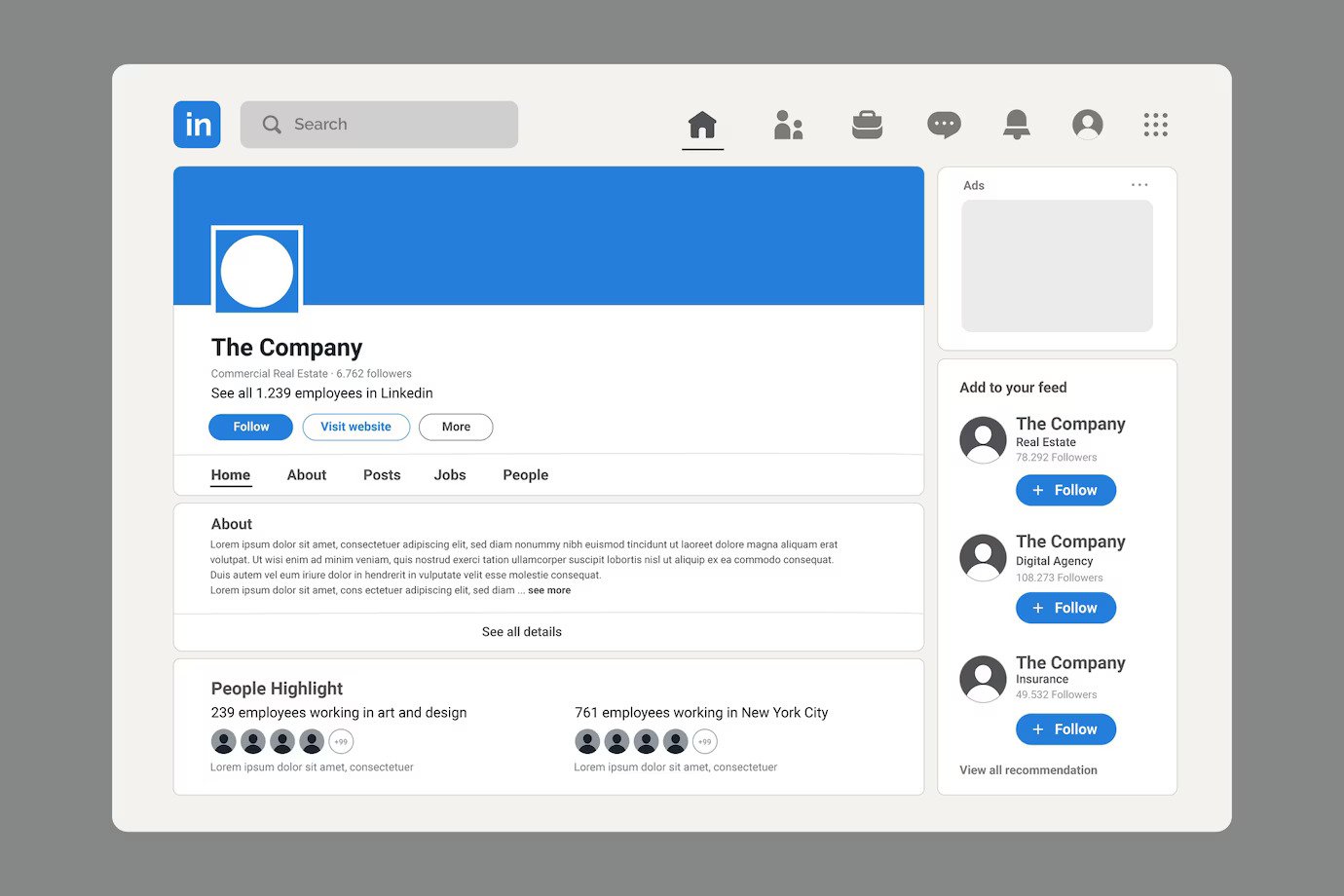
With over 900 million professionals, LinkedIn is the go-to platform for networking, industry insights, and brand positioning. LinkedIn marketing has become a powerful tool for businesses and individuals looking to establish authority, generate leads, and build relationships with their target audience. By sharing valuable and engaging content, companies can connect with decision-makers, drive website traffic, and enhance their online presence. Unlike other social platforms, LinkedIn thrives on thought leadership and professional engagement. Businesses that leverage LinkedIn content marketing effectively can position themselves as industry leaders, attract high-quality leads, and nurture professional relationships. In this guide, we’ll explore the best strategies, content types, and optimization techniques to maximize your LinkedIn marketing success.
Why LinkedIn Content Marketing Matters
1. Professional Audience & High Engagement
LinkedIn offers access to a unique audience of business professionals, decision-makers, and industry experts. Unlike casual social platforms, LinkedIn users engage with content to learn, network, and find business solutions.
2. Lead Generation Potential
Studies show that LinkedIn generates 80% of B2B leads from social media, making it the best platform for connecting with professionals actively seeking business solutions.
3. Thought Leadership & Brand Authority
Sharing insightful and informative content helps brands establish themselves as thought leaders in their industry. Regularly publishing high-value content increases credibility and builds trust with your audience.
Types of LinkedIn Content That Perform Best
1. LinkedIn Articles
Ideal for long-form content, allowing users to showcase expertise.
Indexed by search engines, improving visibility beyond LinkedIn.
Best for in-depth industry insights, case studies, and guides.
2. Text-Only Posts
Simple yet effective for engagement and storytelling.
Posts with strong opening lines encourage conversations.
Short, direct insights work best for thought leadership.
3. Native Videos
Videos receive five times more engagement than other types of content.
Great for behind-the-scenes insights, product demos, and interviews.
Keep videos short (under 2 minutes) with captions for silent viewing.
4. Infographics & Slide Decks (LinkedIn Carousel Posts)
Perfect for data-driven storytelling and step-by-step guides.
Visually appealing, making complex information easy to digest.
High engagement when used for industry trends, reports, or frameworks.
5. Polls & Surveys
Encourages audience participation and feedback.
Helps brands understand industry trends and user preferences.
Works best with concise questions and clear answer options.
Best Practices for LinkedIn Content Marketing
1. Optimize Your Profile & Company Page
Before creating content, ensure that your personal or business profile is fully optimized. This includes:
A clear, professional headline and summary with relevant keywords.
A high-quality profile and banner image reflecting your brand.
A well-detailed “About” section outlining your expertise and value.
2. Post Consistently
Consistency is key in LinkedIn marketing. Brands and professionals who post at least 3-5 times per week see higher engagement and visibility. Plan a content calendar to maintain regular posting.
3. Engage with Your Audience
Engagement is just as important as content creation. To boost reach and build relationships:
Respond to comments and questions promptly.
Share and comment on posts from industry leaders.
Tag relevant people in discussions for greater visibility.
4. Use Hashtags Strategically
Hashtags help increase content discoverability. Use a mix of:
Industry-specific hashtags (e.g., #B2BMarketing, #SocialSelling).
Branded hashtags to build community (e.g., #YourCompanyName).
Trending hashtags for visibility in active discussions.
5. Encourage Employee Advocacy
Encourage employees to share company content, write personal insights, and engage with business posts. Employee advocacy boosts reach, making your content appear in more LinkedIn feeds.
Measuring the Success of LinkedIn Content Marketing
1. Track Key Performance Metrics
To measure the effectiveness of your LinkedIn marketing strategy, focus on:
Engagement Rate – Likes, comments, and shares indicate content resonance.
Click-Through Rate (CTR) – Measures how many users click on your links.
Follower Growth – A growing audience shows increasing interest.
Lead Generation & Conversions – Tracks how many leads come from LinkedIn.
2. A/B Test Different Content Types
Experiment with different content formats to see what works best. Compare text posts vs. videos, articles vs. carousels, and adjust strategies based on performance.
3. Use LinkedIn Analytics & Third-Party Tools
LinkedIn Analytics (built-in for pages) provides insights into post reach and engagement.
Third-party tools like Hootsuite, Sprout Social, or Shield can offer deeper performance tracking.
LinkedIn Marketing Trends
1. AI-Generated & Personalized Content
Artificial intelligence tools are making it easier to create data-driven, personalized content. Using AI-powered recommendations can help brands craft engaging posts tailored to their audience.
2. More Video & Interactive Content
LinkedIn is prioritizing video content and interactive posts like polls and Q&A discussions. Short, value-driven videos will continue gaining traction.
3. Focus on Authentic Storytelling
Users prefer genuine, behind-the-scenes stories over corporate messaging. Content with personal insights, failures, and successes generates better engagement.
4. LinkedIn Newsletters & Live Streams
Brands are increasingly using LinkedIn newsletters and live streaming to create ongoing audience engagement and community-building efforts.
A well-executed LinkedIn content marketing strategy can drive brand awareness, generate leads, and position businesses as industry leaders. By leveraging diverse content formats like articles, videos, and carousels, companies can maximize engagement and reach the right audience.
Success on LinkedIn requires consistency, audience interaction, and a data-driven approach. By tracking performance metrics and staying updated with emerging trends, businesses can refine their LinkedIn content marketing strategy for long-term growth. With the right tactics, LinkedIn can become a powerful platform for building credibility, expanding professional networks, and achieving marketing goals.

